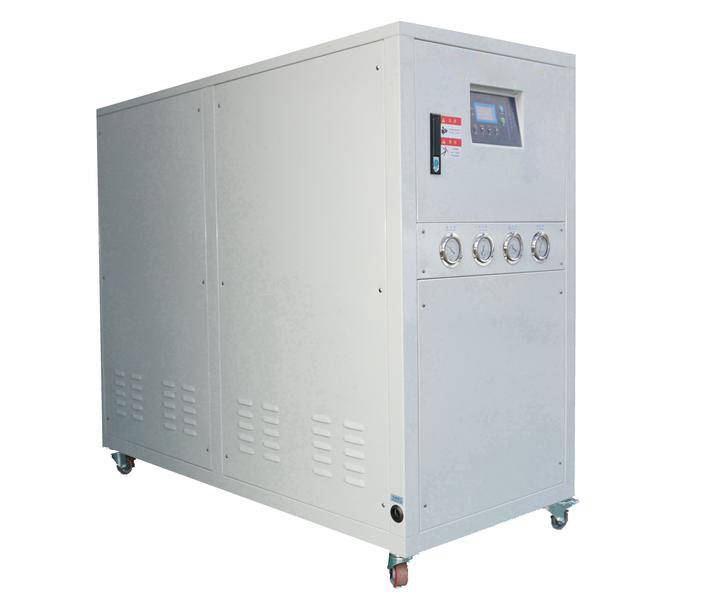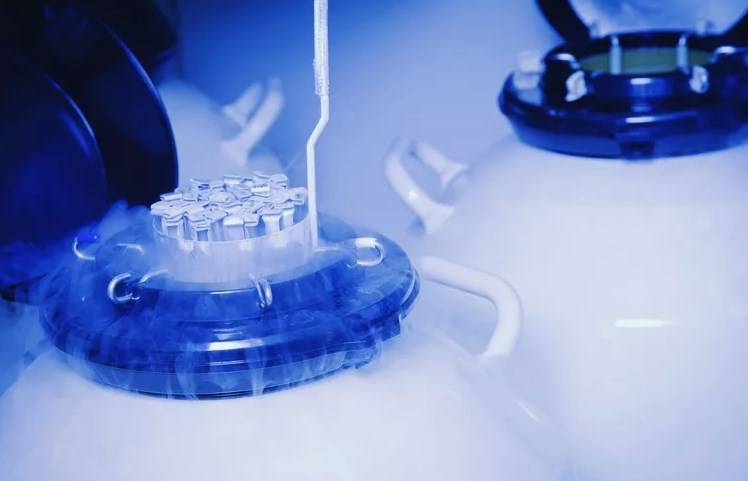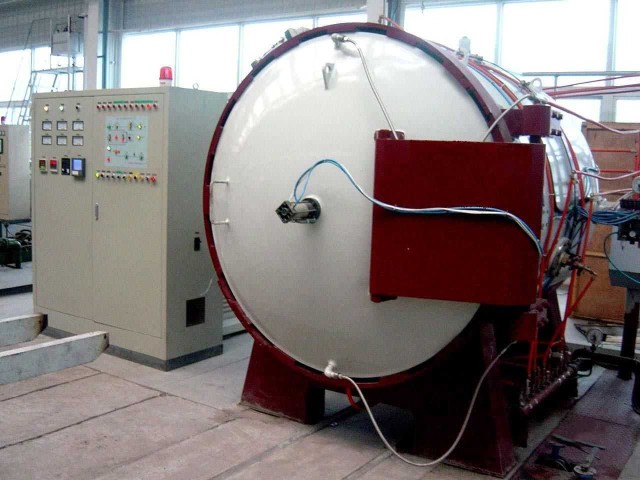Vacuum Heat Treatment Furnace Features
Strict Vacuum Sealing
Maintaining the integrity of a vacuum environment is paramount for the successful heat treatment of metal parts within a closed furnace. This stringent requirement necessitates strict vacuum sealing to uphold the original furnace leakage rate and guarantee the quality and consistency of the treated parts. The furnace body, in particular, must be meticulously constructed to ensure gas-tightness. This is typically achieved through precision welding techniques that minimize the number of openings and potential points of leakage.
To further elucidate the importance of vacuum sealing, consider the following key points:
-
Gas-Tight Welding: The furnace body must undergo gas-tight welding to create an impermeable barrier against atmospheric gases. This process involves specialized techniques to ensure that no microscopic gaps or pores remain, which could lead to vacuum degradation.
-
Minimizing Openings: Every opening in the furnace body presents a potential pathway for air and other gases to enter. Therefore, design considerations must prioritize the reduction of such openings to an absolute minimum. This not only enhances the vacuum integrity but also simplifies maintenance and inspection processes.
-
Sealing Materials: Advanced sealing materials, such as high-temperature resistant gaskets and seals, are employed to further bolster the vacuum environment. These materials are chosen for their ability to withstand the extreme conditions within the furnace while maintaining their sealing properties.
In summary, the meticulous attention to vacuum sealing in vacuum heat treatment furnaces is a cornerstone of ensuring the quality and reliability of the heat treatment process. By employing gas-tight welding, minimizing openings, and utilizing high-performance sealing materials, the integrity of the vacuum environment is preserved, thereby safeguarding the quality of the treated metal parts.
Use of Heating and Insulation Materials
In vacuum heat treatment furnaces, the selection of heating and insulation materials is critical to ensuring both operational efficiency and the integrity of the treated components. These materials must excel in two primary areas: vacuum compatibility and high-temperature endurance.
Materials such as tantalum, tungsten, molybdenum, and graphite are frequently employed due to their exceptional properties. For instance, tantalum and tungsten exhibit remarkable high-temperature stability, maintaining their structural integrity even under extreme heat conditions. Similarly, molybdenum and graphite offer low vapor pressures, which is essential for maintaining a stable vacuum environment within the furnace.
| Material | High-Temperature Resistance | Low Vapor Pressure |
|---|---|---|
| Tantalum | Excellent | High |
| Tungsten | Excellent | High |
| Molybdenum | Very Good | Moderate |
| Graphite | Good | Very Low |
The use of these materials ensures that the furnace can operate at the required temperatures without compromising the vacuum integrity, thereby guaranteeing the quality and consistency of the heat treatment process.

Water-Cooled Devices
Water-cooled devices are essential components in vacuum heat treatment furnaces, designed to safeguard critical parts from the extreme conditions they operate under. These devices are primarily used to cool the furnace shell, furnace cover, and electric heating elements, which are susceptible to deformation and damage due to the high temperatures and vacuum environment.
The necessity for water-cooled devices arises from the unique operational demands of vacuum heat treatment furnaces. Under vacuum conditions, the absence of atmospheric pressure means that there is no external force to counteract the internal thermal expansion of the furnace components. This can lead to significant deformation or even structural failure if not managed properly. Additionally, the high temperatures generated during the heating process can cause material degradation, particularly in components made from metals with lower thermal stability.
To mitigate these risks, water-cooled jackets and conduits are strategically placed around the furnace shell and cover. These cooling systems operate by circulating water at controlled temperatures, effectively dissipating the heat and maintaining the structural integrity of the furnace components. Similarly, electric heating elements, which are crucial for the uniform heating of workpieces, also require water-cooling to prevent overheating and ensure their longevity.
The integration of water-cooled devices is not just a protective measure but a critical aspect of the furnace's operational efficiency. By ensuring that key components remain within their thermal limits, these devices contribute to the overall reliability and performance of the vacuum heat treatment process. This is particularly important in industries where precision and consistency are paramount, such as aerospace and automotive manufacturing.

In summary, water-cooled devices play a pivotal role in the design and operation of vacuum heat treatment furnaces. They are indispensable for preventing thermal-induced damage and ensuring the longevity and efficiency of the furnace components, thereby maintaining the high standards required in advanced manufacturing processes.
Low Voltage and High Current
In vacuum heat treatment furnaces, the electric heating elements are designed to operate at low voltages. This design choice is crucial to prevent the occurrence of glow or arc discharges, which can lead to significant damage to furnace components. These discharges, if not managed, can compromise the integrity of the heating elements and other critical parts, thereby affecting the overall performance and longevity of the furnace.
To mitigate the risk of such discharges, the structural design of the furnace must incorporate several key features. For instance, the layout of the heating elements should be meticulously planned to ensure that they are adequately spaced and insulated. This helps in reducing the likelihood of electrical discharges that could occur due to close proximity or insufficient insulation. Additionally, the use of high-quality, specialized insulation materials can further enhance the safety and reliability of the heating system.
Moreover, the electrical connections within the furnace must be robust and designed to handle high currents efficiently without causing localized heating or sparking. This involves using thick conductors and well-insulated connectors to ensure that the electrical energy is transmitted smoothly and safely to the heating elements. By adopting these measures, the furnace can maintain a stable and efficient heating process, minimizing the risks associated with low voltage and high current operations.
High Degree of Automation
Vacuum heat treatment furnaces necessitate a high degree of automation to orchestrate rapid actions with precision, thereby guaranteeing the safety and efficiency of both the heating and cooling processes. This automation is crucial for several reasons:
-
Safety Protocols: Automated systems can monitor and respond to temperature fluctuations and pressure changes in real-time, ensuring that the furnace operates within safe parameters. This proactive approach minimizes the risk of accidents and ensures the integrity of the metal parts being treated.
-
Process Efficiency: Automation allows for the precise control of heating and cooling cycles, optimizing the time and energy required for each process. This not only enhances the overall efficiency of the furnace but also reduces operational costs.
-
Consistency in Quality: By automating repetitive tasks, the furnace can maintain a consistent treatment process, leading to uniform and high-quality results. This is particularly important in industries where precision and reliability are paramount, such as aerospace and automotive manufacturing.
-
Complex Coordination: The intricate coordination required for rapid actions, such as sudden temperature adjustments or gas flow changes, is best managed by automated systems. These systems can execute complex sequences swiftly and accurately, ensuring that each step of the process is carried out as intended.
In summary, the high degree of automation in vacuum heat treatment furnaces is indispensable for maintaining safety, enhancing efficiency, ensuring consistent quality, and managing complex operational sequences.
General Knowledge of Vacuum Heat Treatment
Cooling Gas and Vacuum Oil
When dealing with titanium alloys in vacuum heat treatment, it is crucial to avoid using nitrogen as a cooling gas. This is due to the potential for chemical reactions that can compromise the integrity of the alloy. Instead, vacuum quenching oil with a low saturation vapor pressure is recommended for the quenching process. This type of oil ensures efficient heat transfer while minimizing the risk of surface contamination.
To maintain the integrity of the heat treatment process, the furnace should be kept under a vacuum environment or filled with pure nitrogen. This practice helps to prevent the absorption of moisture, which can lead to oxidation and other undesirable effects. The purity of the nitrogen used is also critical; it should contain no more than 2 ppm of oxygen and 5-10 ppm of water by volume to ensure optimal performance.

In contrast, nitrogen is commonly used as a cooling medium in many other applications due to its cost-effectiveness and relative safety. However, for titanium alloys, the risks associated with chemical reactions necessitate the use of alternative methods. The selection of the appropriate cooling medium is thus a critical consideration in the vacuum heat treatment of titanium alloys, ensuring both the quality and safety of the final product.
Pressure and Heating
Controlling the pressure rise rate is crucial in vacuum heat treatment furnaces to ensure the integrity and uniformity of the heating process. The primary method of heating in these furnaces is through radiation, which necessitates careful spacing of workpieces to achieve even heat distribution. Proper spacing prevents localized overheating and ensures that all parts reach the desired temperature uniformly.
The heating temperature for vacuum treatments typically aligns with conventional methods, but the vacuum environment introduces unique challenges. For instance, the absence of atmospheric gases means that heat transfer occurs solely through radiation, unlike conventional furnaces where convection also plays a significant role. This necessitates the use of high-temperature resistant materials, such as tantalum, tungsten, molybdenum, and graphite, which are commonly employed in vacuum furnaces due to their low vapor pressure and ability to withstand extreme temperatures.
Moreover, the design of the furnace must account for the low voltage and high current requirements of the electric heating elements to prevent arc discharges. Water-cooled devices are essential for components like the furnace shell and cover to mitigate the risk of deformation and damage under the intense heat and vacuum conditions. The high degree of automation in these furnaces ensures that all these intricate processes are coordinated accurately, enhancing both safety and efficiency.
Cooling and Gas Purity
Vacuum tempering furnaces are equipped with advanced fast cooling devices that allow for adjustable water flow rates, ensuring precise temperature control during the cooling process. This is crucial for maintaining the integrity and properties of various materials, including steel, high-temperature alloys, and titanium alloys.
| Material | Recommended Cooling Gas | Purity Requirements |
|---|---|---|
| Steel | Nitrogen | High purity (>99.9%) |
| High-Temperature Alloys | Argon | Ultra-high purity (>99.999%) |
| Titanium Alloys | Argon | Ultra-high purity (>99.999%) |
The choice of cooling gas is not arbitrary; it is dictated by the specific chemical and physical properties of the material being treated. For instance, while nitrogen is effective for cooling steel, it can react chemically with titanium alloys, leading to undesirable surface contamination. Therefore, argon, with its inert nature, is preferred for cooling titanium alloys and high-temperature alloys, ensuring that the materials retain their desired mechanical and chemical properties.
Moreover, the purity of the cooling gas plays a pivotal role in the heat treatment process. High-purity gases, such as ultra-high purity argon, minimize the risk of introducing impurities that could compromise the material's quality. This meticulous attention to gas purity underscores the importance of maintaining a controlled environment within the vacuum furnace, where even minor contaminants can have significant impacts on the final product.
Related Products
- Vacuum Hot Press Furnace Machine Heated Vacuum Press
- Vacuum Heat Treat Sintering Brazing Furnace
- Vacuum Heat Treat and Pressure Sintering Furnace for High Temperature Applications
- 2200 ℃ Graphite Vacuum Heat Treat Furnace
- Vacuum Heat Treat Furnace with Ceramic Fiber Liner
Related Articles
- Exploring Tungsten Vacuum Furnaces: Operation, Applications, and Advantages
- Vacuum Melting Furnace: A Comprehensive Guide to Vacuum Induction Melting
- Molybdenum Vacuum Furnace: High-Temperature Sintering and Heat Treatment
- Vacuum Laboratory Furnaces in Advanced Materials Research
- Vacuum Hot Press Furnace: A Comprehensive Guide






















